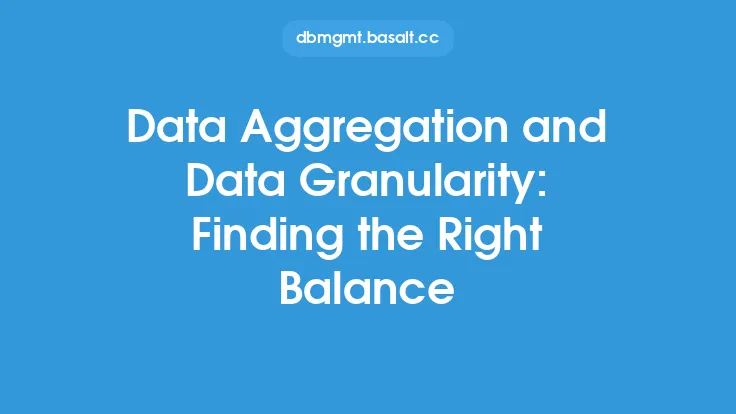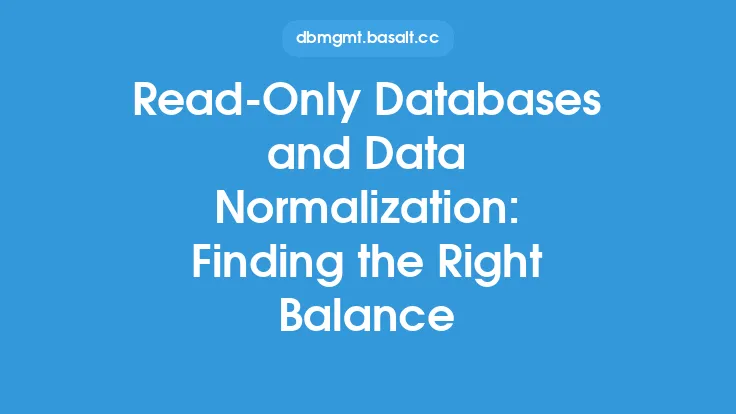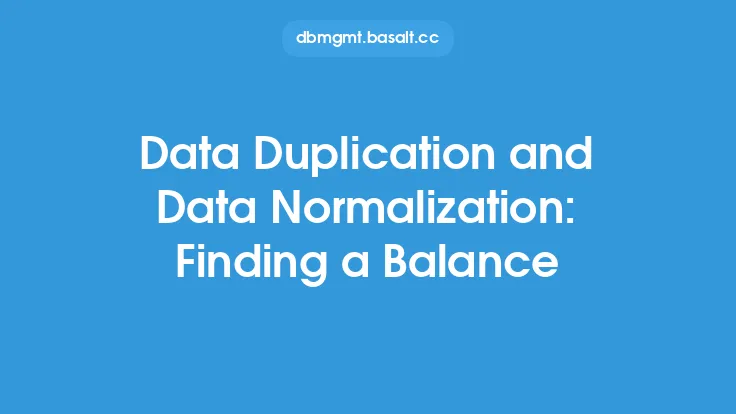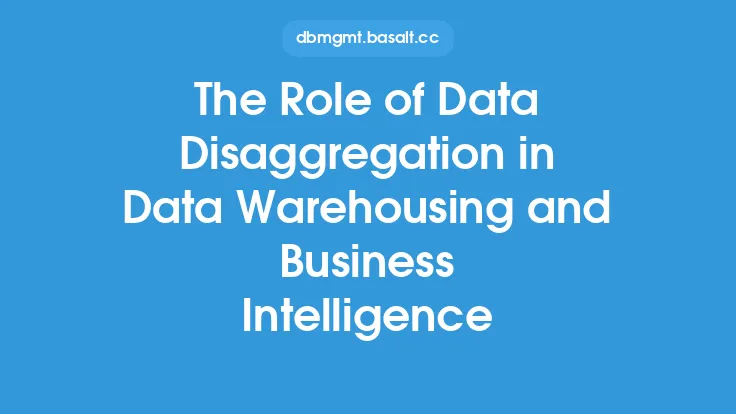Data normalization is a crucial process in data management that involves organizing data in a way that minimizes data redundancy and dependency. One key aspect of data normalization is data disaggregation, which involves breaking down complex data sets into smaller, more granular components. However, finding the right balance between data disaggregation and granularity is essential to ensure that data is meaningful, useful, and easy to analyze.
Introduction to Data Disaggregation
Data disaggregation is the process of breaking down aggregated data into smaller, more detailed components. This process is essential in data normalization as it helps to reduce data redundancy, improve data integrity, and enhance data analysis. Data disaggregation involves identifying the individual elements that make up a complex data set and separating them into distinct categories. For example, a company's sales data may be aggregated by region, but disaggregating this data by individual store or product can provide more detailed insights into sales trends and patterns.
The Importance of Granularity in Data Disaggregation
Granularity refers to the level of detail in data. In data disaggregation, granularity is critical as it determines the level of detail that is required to make informed decisions. Too little granularity can result in data that is too general and lacks meaningful insights, while too much granularity can result in data that is too detailed and overwhelming. Finding the right balance between data disaggregation and granularity is essential to ensure that data is useful, meaningful, and easy to analyze. For instance, a company may want to analyze customer purchase behavior, but if the data is too granular, it may be difficult to identify overall trends and patterns.
Factors to Consider When Determining the Right Level of Granularity
Several factors need to be considered when determining the right level of granularity in data disaggregation. These include the purpose of the data analysis, the type of data being analyzed, and the level of detail required to make informed decisions. For example, a company may want to analyze sales data to identify trends and patterns, but if the data is too granular, it may be difficult to identify overall trends and patterns. On the other hand, if the data is too general, it may lack meaningful insights. Other factors to consider include data quality, data volume, and data complexity.
Technical Considerations in Data Disaggregation and Granularity
From a technical perspective, data disaggregation and granularity require careful consideration of data modeling, data warehousing, and data governance. Data modeling involves designing a data structure that can accommodate the required level of granularity, while data warehousing involves storing and managing large volumes of data. Data governance involves ensuring that data is accurate, complete, and consistent across the organization. Technical considerations also include data processing, data storage, and data retrieval, as well as ensuring that data is secure and compliant with regulatory requirements.
Balancing Data Disaggregation and Granularity in Practice
In practice, balancing data disaggregation and granularity requires a deep understanding of the business requirements and the data itself. This involves working closely with stakeholders to understand their needs and requirements, as well as analyzing the data to determine the optimal level of granularity. It also involves using data visualization tools and techniques to present data in a way that is easy to understand and analyze. Additionally, it involves using data governance and data quality processes to ensure that data is accurate, complete, and consistent across the organization.
Common Challenges and Pitfalls in Data Disaggregation and Granularity
Several challenges and pitfalls need to be avoided when balancing data disaggregation and granularity. These include over-disaggregating data, which can result in data that is too detailed and overwhelming, and under-disaggregating data, which can result in data that is too general and lacks meaningful insights. Other challenges and pitfalls include data quality issues, data governance issues, and technical issues such as data processing and storage limitations.
Best Practices for Achieving the Right Balance
To achieve the right balance between data disaggregation and granularity, several best practices can be followed. These include understanding the business requirements and the data itself, using data visualization tools and techniques to present data in a way that is easy to understand and analyze, and using data governance and data quality processes to ensure that data is accurate, complete, and consistent across the organization. Additionally, it involves working closely with stakeholders to understand their needs and requirements, as well as analyzing the data to determine the optimal level of granularity.
Conclusion
In conclusion, finding the right balance between data disaggregation and granularity is essential to ensure that data is meaningful, useful, and easy to analyze. This requires a deep understanding of the business requirements and the data itself, as well as careful consideration of technical factors such as data modeling, data warehousing, and data governance. By following best practices and avoiding common challenges and pitfalls, organizations can achieve the right balance between data disaggregation and granularity, and unlock the full potential of their data.





